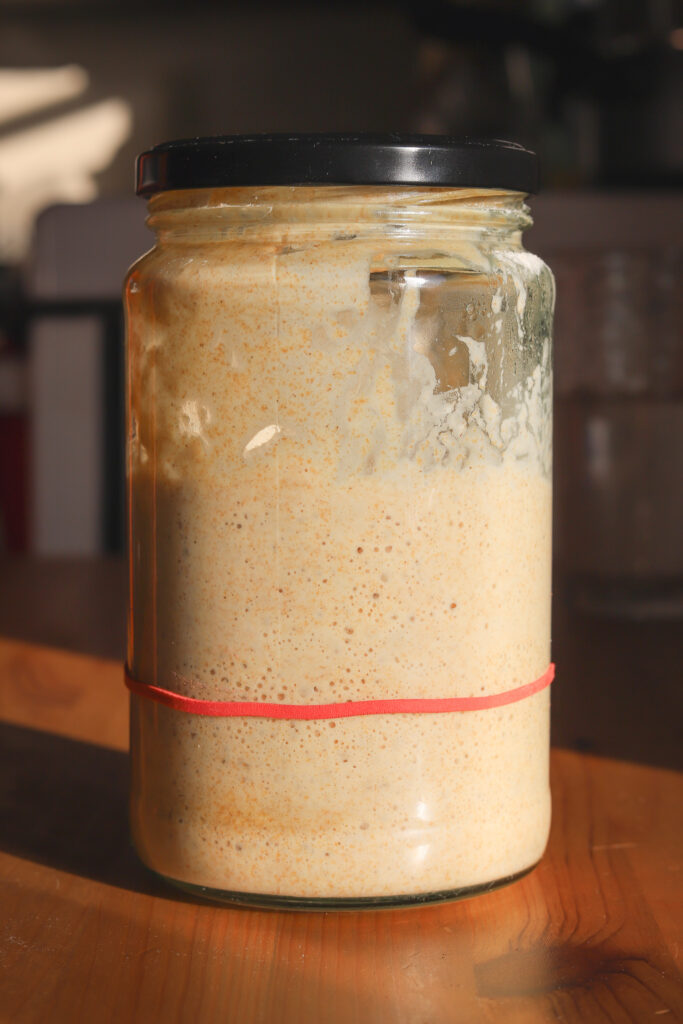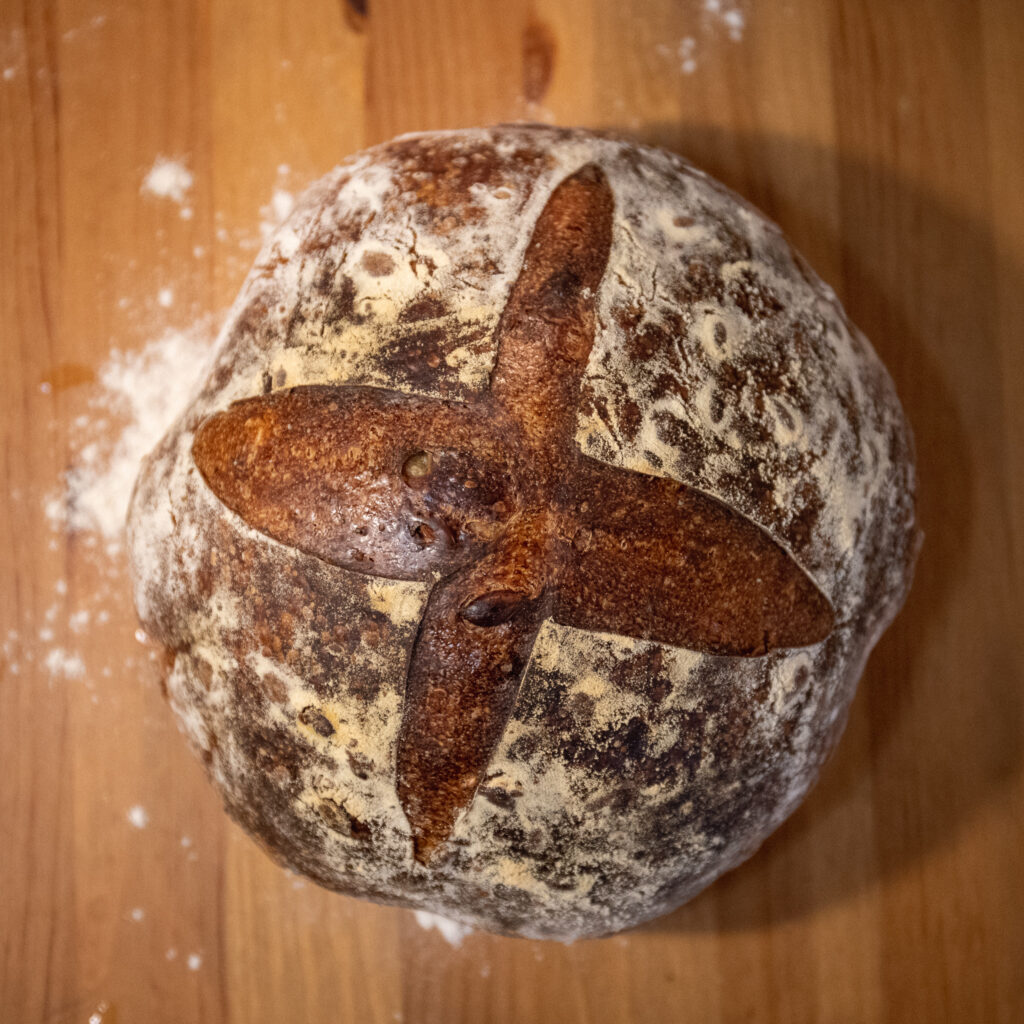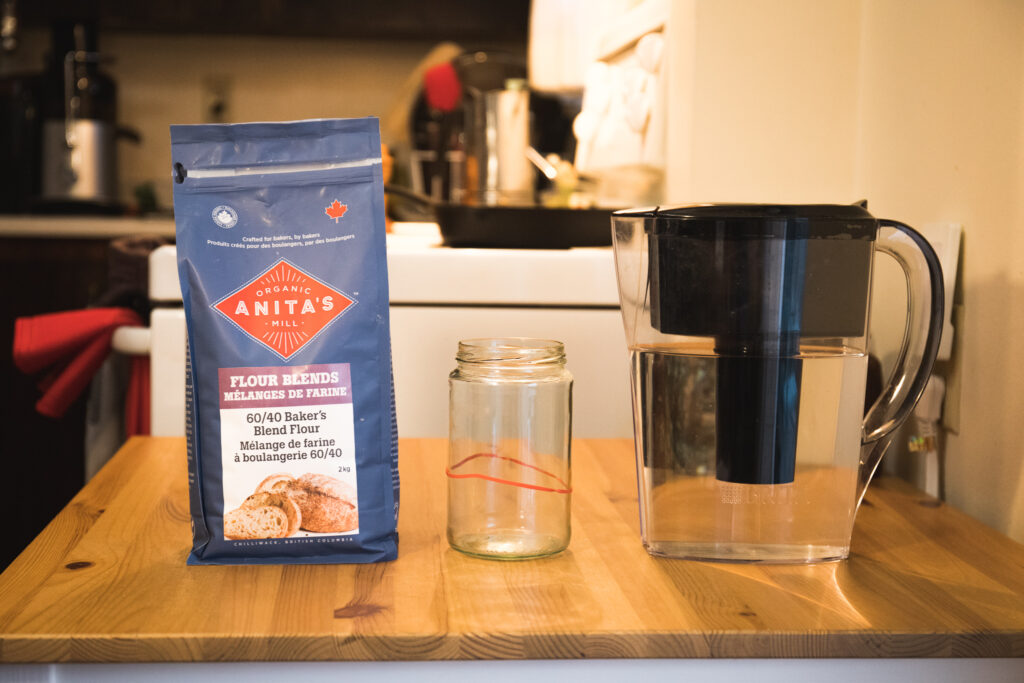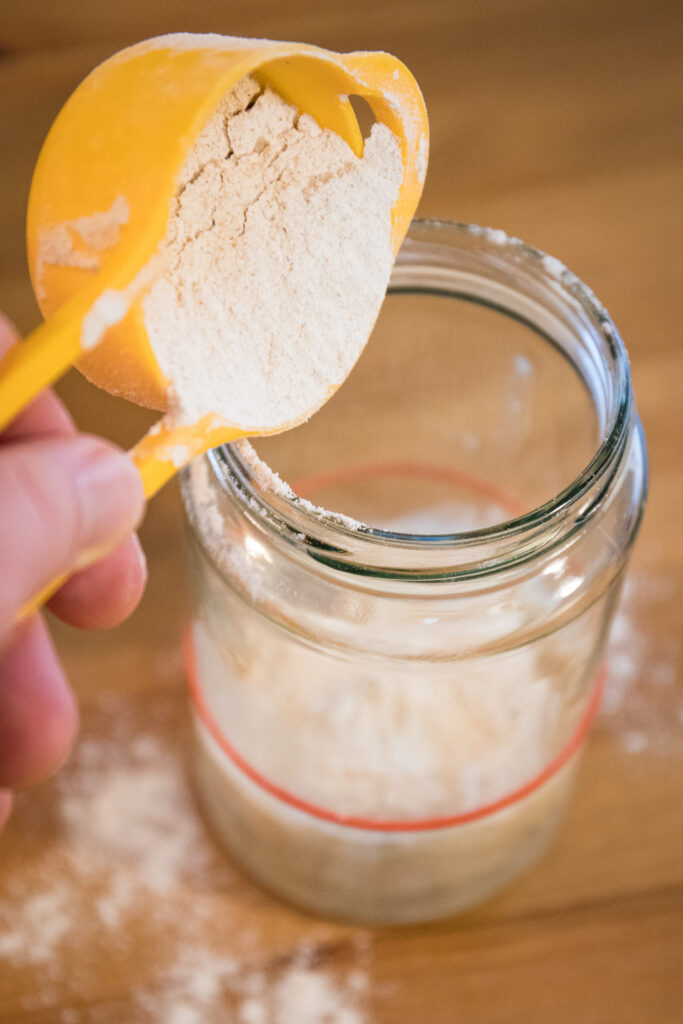Welcome back for week two of the search for the perfect loaf of sourdough bread in which I will focus on how to maintaining a healthy culture of starter.

Once you have a healthy culture of starter, there are different options for storage depending on how often you plan on making bread. If you plan on making bread a few times a week, you can store it in a cool dry place. If you will be making one or fewer loaves a week, you can store it in the fridge.
Storing in the fridge
This is a great option if you don’t plan on using your starter much. When you put it in the fridge, it will ferment slower and should be fine without feeding for a week or two just fine. When you plan on making bread, take out the starter of the fridge and feed it making sure you give it time to warm up and rise. The starter should also be fed before going back into the fridge to make sure there is enough food for it while you don’t use it — though it should be fine without as well.
Storing in a cool dry place
If you plan on using the starter often, storing your starter in a cool dry place is a great option. If you do this it’s important to feed your starter every day at the same time if possible. Feeding it at the same time will help with the consistency of its rising and falling — it’s a good idea to time your feedings in a way that is consistent with when you start making bread.
When is the starter is ready to use?
It usually takes between 3-8 hours for the starter to peak before it starts running out of food (flour) and begins to fall. With this said, some recipes don’t require active starter and you can use it straight out of the fridge.

References
Gane, T. (2022, October 31). How to store Sourdough starter. Southern Living. Retrieved February 2, 2023, from https://www.southernliving.com/food/bread/how-to-store-sourdough-starter#:~:text=Sourdough%20starter%20can%20be%20stored,the%20refrigerator%2C%22%20Pellegrinelli%20explains.
Robertson, C. (2010). Tartine bread. Chronicle Books.
The Pantry Mama. (2023, January 4). How to store sourdough starter in the fridge. The Pantry Mama. Retrieved February 2, 2023, from https://www.pantrymama.com/how-to-store-sourdough-starter-in-the-fridge/#:~:text=Your%20starter%20will%20survive%20for,ready%20to%20use%20it%20again.



